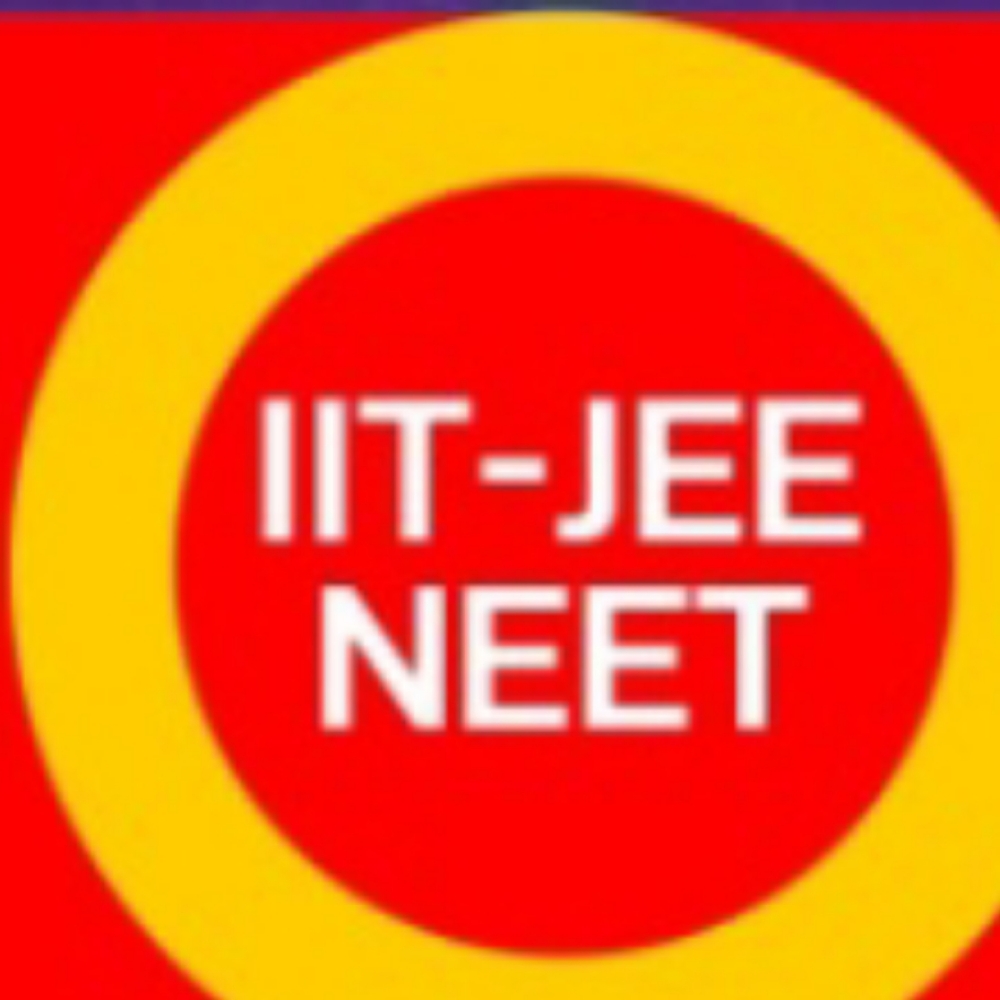Question 1 :
A plano-convex lens has focal length of 20 cm. If its plane surface is silvered, then new focal length will be -
Question 2 :
If the space between the lenses in the lens combination shown were filled with water, what would happen to the focal length and power of the lens combination?<br><img style='object-fit:contain' src='https://storage.googleapis.com/teachmint/question_assets/JEE%20Main/5e788237135d6370e9dc16fd' height='76' width='46' ><br>Focal Length Power
Question 4 :
An object 1 cm tall is placed 4 cm infront of a mirror. In order to produce an upright image of 3 cm height one needs a -
Question 5 :
What is the speed of light in glass if the index of refraction of the glass is $1.63$?
Question 6 :
The focal length of convex lens is {tex} 30 \mathrm { cm } {/tex} and the size of image is quarter of the object, then the object distance is
Question 9 :
When an object is placed at a distance of 25 cm from a mirror, the magnification is <em>m</em><sub>1</sub>. The object is moved 15 cm away with respect to the earlier position along principal axis, magnification becomes <em>m</em><sub>2</sub>. If <em>m</em><sub>1</sub> <font face="Symbol">×</font> <em>m</em><sub>2</sub> = 4, the focal length of the mirror is
Question 10 :
If a star is moving towards the earth, then the lines are shifted<br>towards<br>
Question 11 :
A fish looking up through the water sees the outside world contained in a circular horizon. If the refractive index of water is {tex} \frac { 4 } { 3 } {/tex} and the fish is {tex} 12 \mathrm { \ cm } {/tex} below the surface, the radius of this circle in {tex} c m {/tex} is
Question 12 :
A ray of light falls on a prism {tex} A B C ( A B = B C ) {/tex} and travels as shown in Fig. The refractive index of the prism material should be greater than<br><img style='object-fit:contain' src="https://s3.ap-south-1.amazonaws.com/me-p/5eee07b697c31b19a3d282ee.jpg" />
Question 13 :
A {tex} 20 \mathrm { cm } {/tex} length of a certain solution causes right-handed rotation of {tex} 38 ^ { \circ } . {/tex} A {tex} 30 \mathrm { cm } {/tex} length of another solution causes left-handed rotation<br>of {tex} 24 ^ { \circ } . {/tex} The optical rotation caused by {tex} 30 \mathrm { cm } {/tex} length of a mixture of the above solutions in the volume ratio 1: 2 is<br>
Question 14 :
Each quarter of a vessel of depth {tex} H {/tex} is filled with liquids of the refractive indices {tex} n , n , n {/tex} and {tex} n {/tex} from the bottom respectively. The apparent depth of the vessel when looked normally is
Question 15 :
The focal lengths of the lenses of an astronomical telescope are 50 cm and 5 cm. The length of the telescope when the image is formed at the least distance of distinct vision is
Question 16 :
An object is placed at some distance from a convex mirror of focal length 20 cm such that a image is formed on a screen which is two times magnified. The distance through which the lens should be moved so that a real image is again formed at same screen which is two times diminished is
Question 17 :
A beam of light starting from point {tex} A {/tex} reflects from a mirror {tex} M {/tex} and forms an image at {tex} B {/tex} as shown in the same horizontal plane as {tex} A {/tex}. For small angle of incidence {tex} i , A B {/tex} is equal to<br><img style='object-fit:contain' src="https://storage.googleapis.com/teachmint/question_assets/JEE%20Main/5d5bb2035637834a588986a4"><br>
Question 18 :
On a hot summer night, the refractive index of air is smallest near the ground and increases with height from the ground. When a light beam is directed horizontally, the Huygens principle leads us to conclude that as it travels, the light beam :
Question 19 :
The image formed by an objective of a compound microscope is
Question 21 :
{tex}\mathbf {Assertion}{/tex} : A narrow pulse of light is sent through a medium. The pulse will retain its shape as it travels through the medium.<br>{tex}\mathbf {Reason}{/tex} : A narrow pulse is made of harmonic waves with a large range of wavelengths.
Question 22 :
A thin double convex lens has radii of curvature each of magnitude 40 cm and is made of glass with refractive index 1.65. Its focal length is nearly
Question 23 :
The critical angle of a medium with respect to air is {tex} 45 ^ { \circ } . {/tex} The refractive index of medium is<br>
Question 24 :
A telescope is used to resolve two stars separated by 4.6×10<sup>-6</sup>rad. If the wavelength of light used is 5460Å, what should be the aperture of the objective of the telescope?
Question 25 :
Light takes 8 min 20 sec to reach from sun on the earth. If the whole atmosphere is filled with water, the light will take the time {tex} \left( a \mu _ { w } = 4 / 3 \right) {/tex}
Question 26 :
A convex lens has {tex} 9 \mathrm { cm } {/tex} focal length and a concave lens has {tex} - 18 \mathrm { cm } {/tex} focal length. The focal length of the combination in contact will be
Question 28 :
A liquid is placed in a hollow prism of angle 60<sup>0</sup>. If the angle of minimum deviation is 30<sup>0</sup>. What is the refractive index of liquid-
Question 29 :
A plano-convex lens is made of a material of refractive index 1.5. The radius of curvature of curved surface is 20 cm. If plane surface is silvered The focal length of silvered lens will be
Question 31 :
A light ray falls on a square slab at an angle 45<font face="Symbol">°</font>. What must be the minimum index of refraction of glass, if total internal reflection takes place at the vertical face? <br> <img style='object-fit:contain' style="max-width:240px;" src="https://storage.googleapis.com/teachmint/question_assets/JEE%20Main/5f16c8261da6d070c2abfb69"/>
Question 32 :
A plastic hemisphere has a radius of curvature of 8 cm and an index of refraction of 1.6. On the axis half way between the plane surface and the spherical one (4 cm from each) is a small object <em>O</em>. The distance between the two images when viewed along the axis from the two sides of the hemisphere is approximately. <img style='object-fit:contain' style="max-width:240px;" src="https://storage.googleapis.com/teachmint/question_assets/JEE%20Main/5f16c853bfef6349df010042"/>
Question 33 :
Diameter of a plano-convex lens is 6 cm and thickness at the center is 3 mm. The radius of curvature of the curved part is approximately.
Question 34 :
A star emitting light of wavelength {tex} 5896 \mathrm { A } ^{\circ}{/tex} is moving away from the earth with a speed of {tex} 3600 \mathrm { km } / \mathrm { sec } . {/tex} The wavelength of light observed on earth will<br>{tex} \left( c = 3 \times 10 ^ { 8 } \mathrm { m } / \mathrm { sec } \text { is the speed of light } \right) {/tex}<br>
Question 35 :
A thin lens of refractive index {tex}1.5{/tex} has a focal length of {tex}15 \mathrm { cm } {/tex} in air. When lens is placed in a medium of refractive index {tex} ( 4 / 3 ) , {/tex} focal length will be now
Question 36 :
When a biconvex lens of glass having refractive index 1.47 is dipped in a liquid , it acts as a plane sheet of glass. This implies that the liquid must have refractive index:
Question 37 :
In the diagram shown, the object is performing SHM according to the equation <em>y</em> = 2<em>A</em>sin(ωt) and the plane mirror is performing SHM according to the equation {tex}Y = - A\text{sin}\left( \text{ωt} - \frac{\pi}{3} \right){/tex}. The diagram shows the state of the object and the mirror at time <em>t</em> = 0 sec. The minimum time from <em>t</em> = 0 sec after which the velocity of the image becomes equal to zero? <img style='object-fit:contain' style="max-width:240px;" src="https://storage.googleapis.com/teachmint/question_assets/JEE%20Main/5f16c83bbfef6349df010026"/>
Question 38 :
In a converging lens of focal length {tex} f {/tex} and the distance between real object and its real image is {tex} 4 f . {/tex} If the object moves {tex} x _ { 1 } {/tex} distance towards lens, its image moves {tex} x _ { 2 } {/tex} distance away from the lens and when object moves {tex} y _ { 1 } {/tex} distance away from the lens its image moves {tex} y _ { 2 } {/tex} distance towards the lens, then choose the correct option<br><img style='object-fit:contain' src="https://storage.googleapis.com/teachmint/question_assets/JEE%20Main/5d5bb2d85637834a58898764"><br>
Question 39 :
A commonly used lens coating material is $MgF_2$ with $n=1.38.$ Find the thickness of non-reflective coating, one shall have for $550nm$ light if it is applied to glass of $n=1.52.$
Question 40 :
The plane face of plano-convex lens of focal length 20 {tex} \mathrm { cm } {/tex} is silvered. This combination is equivalent to the type of mirror and its focal length is
Question 41 :
A plane glass plate is kept on a paper on which letters are printed in various colours; colour of the letters which will be more close to upper surface is
Question 42 :
For a concave mirror of focal length 20 cm, if the object is at a distance of 30 cm from the pole, then the nature of the image and its magnification will be
Question 43 :
A thin convergent glass lens (<font face="Symbol">µ</font><sub>g</sub> = 1.5) has a power of +5.0 <em>D</em>. when this lens is immersed in a liquid of refractive index <font face="Symbol">µ</font><em><sub>l</sub></em>, it acts as a divergent lens of focal length 100 cm. The value of <font face="Symbol">µ</font><em><sub>l</sub></em> is
Question 44 :
A beam with wavelength {tex} \lambda {/tex} falls on a stack of partially reflecting planes with separation {tex} d {/tex}. The angle {tex} \theta {/tex} that the beam should make with the planes so that the beams reflected from successive planes may interfere constructively is (where {tex} n = 1,2 , \ldots . ) {/tex}<br><img style='object-fit:contain' src="https://storage.googleapis.com/teachmint/question_assets/JEE%20Main/5dc3ac85e18860128132dcab"><br>
Question 45 :
For a concave mirror of focal length {tex} 20 \mathrm { cm } , {/tex} if the object is at a distance of {tex}30 \mathrm { cm } {/tex} from the pole, then the nature of the image and its magnification will be
Question 46 :
If refractive index of a slab varies as $m = 1 + x^2$ is measured from one end, then optical path length of a slab of thickness 1 m is
Question 47 :
A water film is formed on a glass-block. A light ray is incident on water film from air at an angle of $\displaystyle { 60 }^{ \circ }$ with the normal. The angle of incidence on glass slab is<br>($\displaystyle { \mu }_{ g } = 1.5,{ \mu }_{ w } = \frac { 4 }{ 3 } $)
Question 48 :
The refractive index of a certain glass is $1.5$ for light where wavelength in vacuum is $6000 A^o V$ The wavelength of this light when it passes through the glass is ___________.
Question 49 :
The refractive indices of four substances W, X, Y, Z are $1.20, 1.77, 1.36, 1.50$ respectively. When light passes from air into these materials, it refracts maximum in<br/>
Question 50 :
In vacuum, to travel distance 'd', light takes time 't' and in medium to travel distance $'5d'$, it takes time 'T'. The critical angle of the medium is.<br>











































